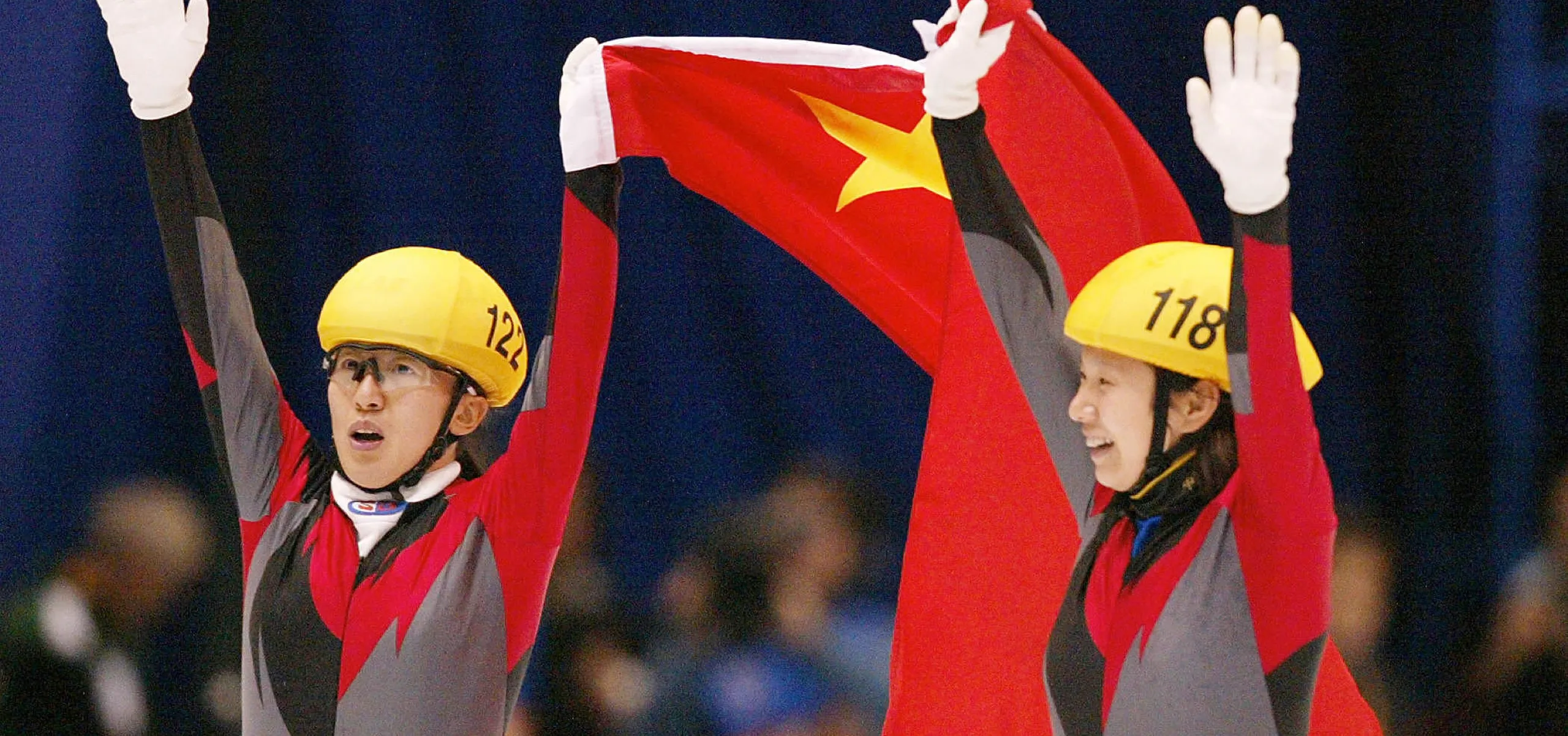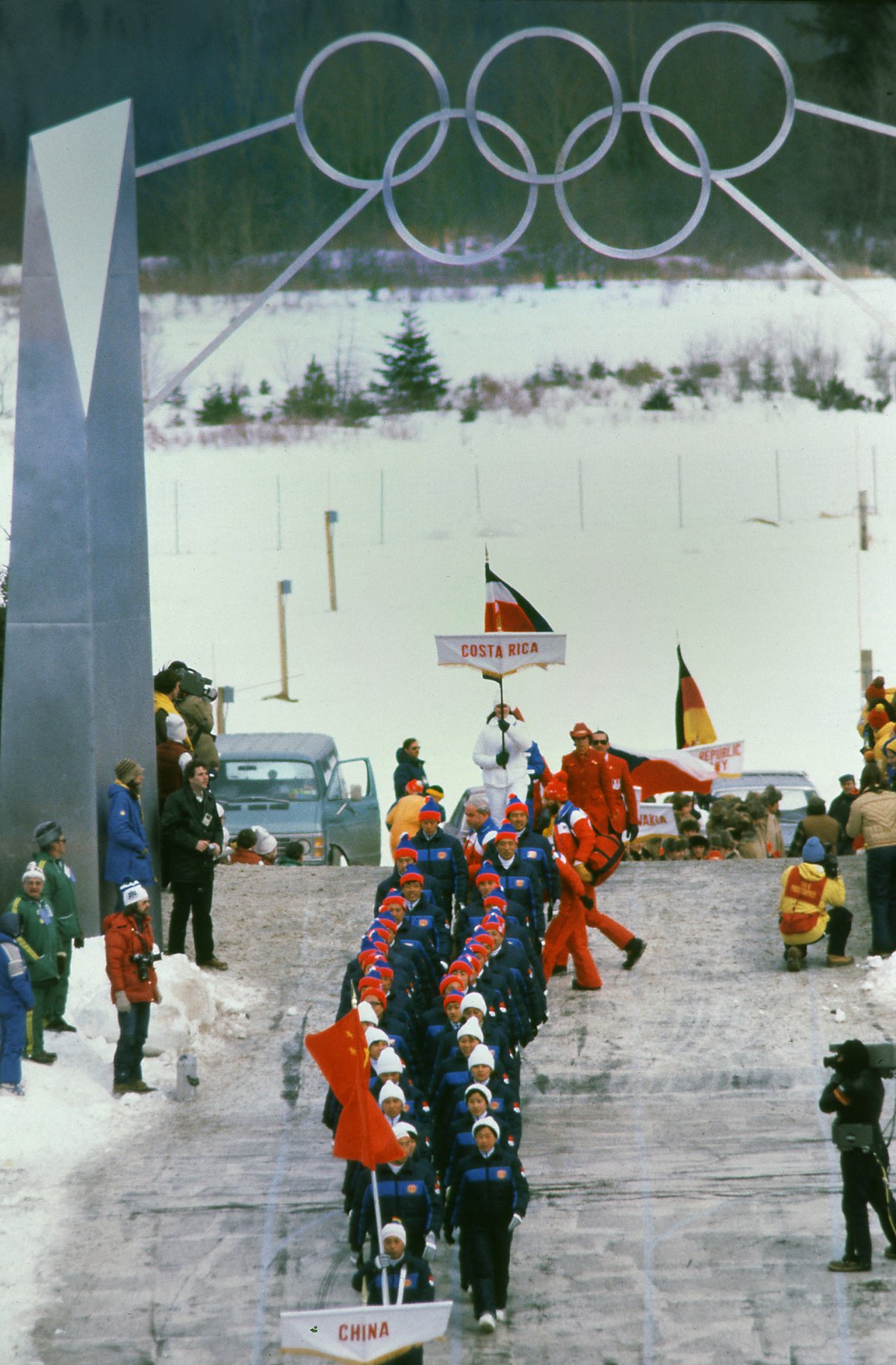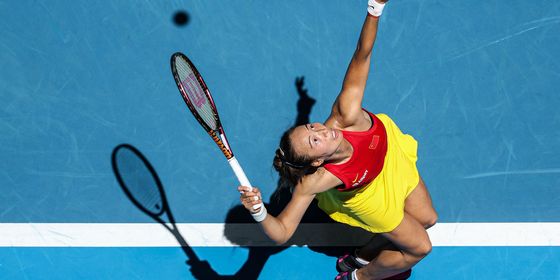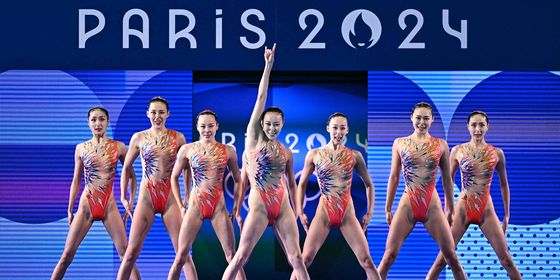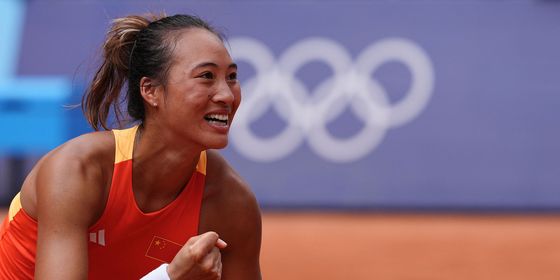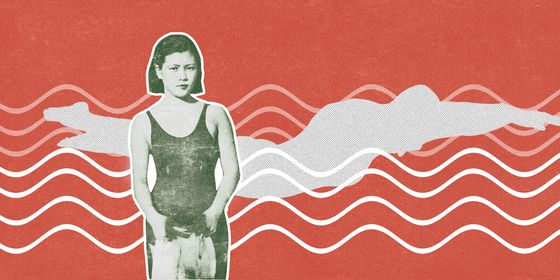How China went from boycotting the Games in the 1950s to hosting it in 2022, and how its athletes trained to compete
On February 13 1980, Zhao Weichang, a national champion speed skater who had broken Chinese national records 26 times, carried the PRC flag into a stadium packed with 30,000 people in Lake Placid, New York, at the opening ceremony of the Winter Olympic Games. He knew the importance of the occasion: “The whole stadium was filled with enthusiastic applause and cheers, to welcome China back into the Olympic family. I was extremely moved; this was the highest honor,” Zhao recalled in an interview with the state-backed Xinhua News Agency in 2021.
The Chinese team of 28 competitors, led by Zhao and entering ahead of Costa Rica (another country making its debut at the Games), were the first from the PRC to attend a Winter Olympics—this was the first time in 28 years that the five-star flag of the PRC had flown at any Olympic Games in summer or winter. It marked the return of the PRC to Olympic sports since it began a boycott in the 1950s in protest when the Games included athletes from Taiwan, competing as “Republic of China.”
Over 40 years later, China’s capital is hosting the 24th edition of the Olympics, becoming the first city to host both the Summer and Winter Games. Whereas Chinese athletes had to share secondhand equipment donated by Japan to compete in the 1980s, Beijing now welcomes athletes around the world with state-of-the-art ski resorts, training facilities, and world-class competition venues. The country has won its largest-ever Winter Olympic Games medal haul, and boasts of getting 300 million of its population engaged in winter sports ahead of the Games, according to official figures. It has been a tumultuous journey, in sporting as well as political terms.
When legendary figure skater Yao Bin first started ice skating as a boy in the 1960s, there were no indoor rinks in his hometown of Harbin, Heilongjiang province. Instead, in the winter, Yao would wake up at 4 a.m., endure temperatures as low as minus-20 Celsius, and head for frozen lakes to take advantage of the best conditions on the ice. In the summer, skating was impossible, so he focused only on improving his fitness via running, as he explained in an interview with Xgame.com, a winter sports website, in 2020. Meanwhile, early professional skiers in China had to hike up snowy slopes to practice, as there were no ski areas with chairlifts in the country.
Politics was another formidable barrier for China’s winter athletes. After the PRC attended its first Olympic Games in Helsinki in the summer of 1952, the country boycotted the competition over the International Olympic Committee’s decision to let the team from Taiwan compete at the Games. That meant the PRC also missed out on the Winter Olympics from then to 1980, while athletes from Taiwan went in 1972 and 1976, though they failed to win any medals.
During that time, winter sports in the PRC were only just emerging, and were practiced almost exclusively in the frigid northeast of the country. China’s first official national skiing competition was held in 1957 in Tonghua, Jilin province, though there was no ski “resort” there to speak of at that time. When China finally made it to Lake Placid in 1980, four of the country’s 28 competitors hailed from Tonghua.
But while national-level competitions were held regularly after that, opportunities for PRC winter athletes to compete abroad were limited, and the political climate at home even made some sports risky: “In the 1970s, we were almost labeled counter-revolutionaries!” Yao told news website Hinews in 2010. “We were performing in Beijing, and some central government leaders said to us, ‘You can only skate forward. Why do you skate backward? That’s falling behind; history can’t be reversed.’”
Yao and his skating partner Luan Bo were among the first generation of Chinese professional figure skaters and the first to attend an international competition. They competed at the World Figure Skating Championship in Dortmund, Germany, in 1980—and finished last.
China gradually opened up diplomatic channels with the outside world starting in the 1970s, gaining a seat at United Nations in 1971 and normalizing relations with the US in 1979. In tandem with thawing relations, the IOC eventually voted to have athletes from Taiwan compete as Chinese Taipei, paving the way for the Chinese Olympic Committee, based in Beijing, to return to the IOC in late 1979, less than four months before the Lake Placid Winter Games were scheduled to start in the US.
With little preparation time, the PRC cobbled together a team of 28 competitors in five sports, with all the athletes and coaches from Jilin, Heilongjiang, or the military.
But despite the national-level prowess of athletes like Zhao and alpine skier Wang Guizhen, who had dominated skiing in the PRC for almost five years by the time he arrived at Lake Placid, none of the country's competitors placed in the top half of their events. It would be 12 years before the country finally won a Winter Olympic medal, and another 10 years after that until a gold.
While the Games in 1980 brought little sporting success for the PRC, it was a significant political victory for the country. The Chinese Taipei team boycotted the Games in Lake Placid in protest at the PRC's inclusion and name change, but it would later return to attend the 1984 Games in Sarajevo under the new name. The 1984 Games was the first time athletes from both sides of the Taiwan Strait had competed together in an Olympic competition.
From 1980, winter sports began to grow in popularity. Take figure skating as an example: “At that time young people didn’t even dare to date openly, while pairs figure skating would have the woman in a short skirt, pushing and pulling with the man, and embracing; that's what people wanted to see,” Yao said in the Hinews interview.
With economic growth and government investment, sports infrastructure also slowly improved. Yao had found it difficult to compete to international standard in his days, given there were no adequate coaches in China, and he had to hire coaches from Japan or rely on watching videos of his competitions himself to improve. Retiring after the 1984 Games, however, Yao became a coach and one of the pioneering figures that China's athletes needed in the 80s—eventually coaching his students, pairs skaters Shen Xue and Zhao Hongbo, to China’s first World Championships gold medal (figure skating in 2002), and first figure skating Olympic gold in 2010.
The PRC began to excel in speed skating, with short-track speed skater Li Yan claiming a gold and two bronzes at the Calgary Games in 1988, though these were not official results, as the events she skated in were only demonstration sports at the time. China's first official medals arrived in 1992 when female speed skater Ye Qiaobo channeled those years of hard training in frigid conditions to win silver in the 500 and 1,000-meter races.
In 2002, China finally won its first gold medal at the Winter Olympics, when another speed skater, Yang Yang became the first short-track speed skater ever to win multiple golds at one Winter Games, when she triumphed in the 500 and 1,000 meters, as well as claiming a silver in the relay event. Yang hails from Qitaihe, Heilongjiang, a town responsible for seven of China's 21 (and counting) Winter Olympic medals to date, including Men’s Snowboard Big Air gold by 17-year-old phenomenon Su Yiming at the Beijing Games.
The PRC has remained strong in events on ice, while skiing medals have been harder to come by. The country’s first skiing gold was won in aerials by Han Xiaopeng, who became China’s first male Winter Olympic champion, in Turin in 2006.
As China’s economy boomed and sporting facilities improved, so have its Olympic results, with the country’s most successful Games (before Beijing 2022) coming in Vancouver in 2010, when the team won five golds. Meanwhile, Harbin, capital of Heilongjiang province, bid to host the 2010 Games in 2002, but failed to make it through to the second round of voting. In 2009, the city announced plans to apply again for the 2018 Games, but that plan was eventually rejected by the central government, who said it was too soon after the Beijing 2008 Summer Games and highlighted a lack of infrastructure in the city.
On July 31, 2015, Beijing was finally selected as the host of the 2022 Winter Olympic Games, beating out Almaty in Kazakhstan in the final vote. On February 4, at the opening ceremony of the Games, a familiar face carried the Olympic torch as it made its way toward the snowflake-shaped Olympic cauldron in the National (“Bird’s Nest”) Stadium: Zhao Weichang, the PRC’s flag bearer from 1980, now 71. “I was China’s first Winter Olympic flag-bearer, and I’m also a torch-bearer for the Beijing Olympics,” he told Xinhua News, over 40 years on from Lake Placid. “I want to pass on this honor and glory.”





